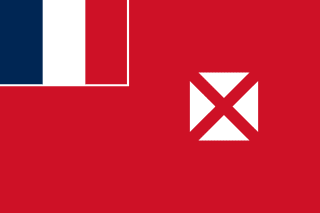Wallis and Futuna - Environment

As far as the environment of Wallis and Futuna is concerned, there have been deforestation (only small portions of the original forests remain) largely as a result of the continued use of wood as the main fuel source; as a consequence of cutting down the forests, the mountainous terrain of Futuna is particularly prone to erosion; there are no permanent settlements on Alofi because of the lack of natural freshwater resources; lack of soil fertility on the islands of Uvea and Futuna negatively impacts agricultural productivity. As for nvironment - international agreements, we have; .
About the environment of Wallis and Futuna
| Climate | We have tropical; hot, rainy season (November to April); cool, dry season (May to October); rains 250-300 cm per year (80% humidity); average temperature 26.6 degrees Celsius |
|---|---|
| Revenue from forest resources | |
| Revenue from coal | |
| Waste and recycling | Municipal solid waste generated annually: |
| Total renewable water resources | |
| Major rivers (by length in km) | |
| Land Use | |
| Agricultural land | 42.9% (2022 est.) |
| Agricultural land: arable land | arable land: 7.1% (2022 est.) |
| Agricultural land: permanent crops | permanent crops: 35.7% (2022 est.) |
| Agricultural land: permanent pasture | permanent pasture: 0% (2022 est.) |
| Forest | 41.6% (2022 est.) |
| Other | 15.5% (2022 est.) |
| Urbanization | |
| Urban population | 0% of total population (2023) |
| Rate of urbanization | 0% annual rate of change (2020-25 est.) |
| Major urban areas (Pop) | 1,000 MATA-UTU (capital) (2018). |
All Important Facts about Wallis and Futuna
Want to know more about Wallis and Futuna? Check all different factbooks for Wallis and Futuna below.
-
 Wallis and Futuna Factbook
Wallis and Futuna Factbook
-
 The Economy of Wallis and Futuna
The Economy of Wallis and Futuna
-
 Learn about the Government of Wallis and Futuna
Learn about the Government of Wallis and Futuna
-
 Communication in Wallis and Futuna
Communication in Wallis and Futuna
-
 Popular Universities in Wallis and Futuna
Popular Universities in Wallis and Futuna
-
 Enerny in Wallis and Futuna
Enerny in Wallis and Futuna
-
 Transport in Wallis and Futuna
Transport in Wallis and Futuna
-
 The Geography and society of Wallis and Futuna
The Geography and society of Wallis and Futuna
-
 The Environment of Wallis and Futuna
The Environment of Wallis and Futuna
-
 Military and security in Wallis and Futuna
Military and security in Wallis and Futuna